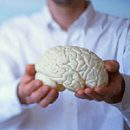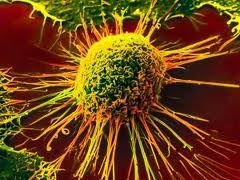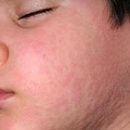What is auditory hallucinations? What is audible hallucinations? What is all overhaulcycling? Answers to these and other questions you will find in the article.
Content
What is hallucinations
Hallucinations - perception disorders when
man as a result of violations of mental activity sees, hears,
It feels the fact that in real validity does not exist. What is it like
They say perception without an object.
To hallucinations you can not attribute mirage - phenomena,
Based on the laws of physics. Like illusions, hallucinations
divided by sense authorities. Usually hearing, visual,
olfactory, taste, tactile and so-called hallucinations of general
feelings to which most often include visceral and muscle
Hallucinations. There may be combined hallucinations (for example, patient
sees a snake, hears her hiss and feels cold touch).
All hallucinations, regardless of whether they are
to visual, auditory or other deceptions of feelings, are divided into
True and pseudogalucination.
Types of hallucinations
True hallucinations. True hallucinations are always projected by,
associated with a real, specifically existing environment («voice» Sounds
due to the real wall; «heck», waving the tail, sits on the real
Chair, tidy of his legs and t. D.), most often do not cause patients
no doubt in their actual existence, as bright and
Natural for hallucinating, like real things. True
hallucinations are sometimes perceived by patients even more bright and clearly,
What really existing objects and phenomena.
Pseudogalucination. Pseudogalucification more often than true,
Characterized by the following distinctive features:
- most often projected inside the body of the patient, mainly in its
head («voice» Sounds inside the head, he sees the patient inside the head
business card with indecent words written on it and t. D.);
Pseudogalucinations first described in. Kandinsky,
Remind views, but differ from them, as emphasized himself in.
Kandinsky, the following features:
If even pseudogallyucinator disorders
projected and outside their own body (which happens much less), then they
deprived of the nature of objective reality peculiar to true
hallucinations are completely unnecessary with the real setting. Moreover,
At the time of hallucination, this situation is disappearing somewhere,
The patient at this time perceives only his hallucinatory image.
The appearance of pseudogalucinations, without causing
the patient of any doubt in their reality is always accompanied by
Feeling armsSTI, poses of these votes or
Vision. Pseudogalucification are, in particular, an integral part
Kandinsky-Clerambo syndrome, which also includes nonsense,
Therefore, patients are convinced that «vision» them «Made with special
Apparators», «Voices suggest in the head of transistors».
Hearing hallucinations. Hearing hallucinations are most often expressed in
Pathological perception of sick some words, speeches, conversations
(phonemes), as well as individual sounds or noise (acoazms). Wonderful
(verbal) hallucinations can be the most diverse in content:
from the so-called olics (patient «Hears» voice calling his name or
surname) to whole phrases or even long speeches pronounced by one or
A few votes.
Most dangerous for the state of patients imperative
hallucinations whose content is imperative,
For example, the patient hears the orders to be silent, hit or kill someone,
Damage to yourself. In view of the fact that similar «orders» are
consequence of the pathology of mental activities hallucinuating person,
Patients with this kind of painful experiences can be very dangerous
both for themselves and for others, and therefore need a special supervision and
Care.
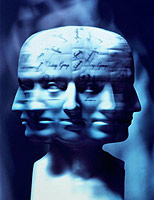 Hallucinations Threatens are also very unpleasant
Hallucinations Threatens are also very unpleasant
for the patient, as he hears the threats to his address, less often - addressed
close to him people: his «Wanted to clean», «Hang», «Throw away from the balcony»
and T. D.
Hearing hallucinations also include
commenting when the patient «Hears speech» about everything that would
thought or whatever did.
Antagonistic (contrasting) hallucinations
are expressed in the fact that the patient hears two groups «Votes» or two «vote»
(sometimes one right, and the other left) with contradictory meaning («let's
Now they will deal with them». - «No, let's wait, it is not so bad»; «Nothing to wait, let's». - «Do not touch, he is his board»).
Spectative hallucinations. Visual hallucinations can be either elementary
(in the form of zigzags, sparks, smoke, flame - the so-called photopsy), or
subject when the patient very often sees not existing in
reality animals or people (including those whom he knows or
knew), animals, insects, birds (zoo), objects or sometimes parts of the body
man and T. D. Sometimes it can be whole scenes, panoramas, for example
Field of the battle, blood pressure with a variety of running, curved, fighting devils (panoramic,
kinopod-like). «Vision» may be ordinary sizes, in the form of very small
people, animals, objects and t. D. (Liliput Hallucinations) or as
very large, even gigantic (macroscopic, hullive
hallucinations). In some cases, the patient can see himself, his
Own image (twin hallucinations, or outoscopic).
Sometimes the patient is something «sees» Behind yourself, outside the field
vision (extracpine hallucinations).
Obony
and taste Hallucinations. Olfactory hallucinations most often
represent an imaginary perception of unpleasant odors (the patient feels
The smell of rotting meat, gary, strain, poison, food), less often - at all unfamiliar
The smell is even less likely - the smell of something pleasant. Often patients with olfactory
hallucinations refuse to eat, as sure that «in food them
Pointed poisonous substances» or «fed rotten human meat».
Taste hallucinations usually coexist with olfactory: patients
Feel the smells of rot, feces, pus, food acquires disgusting
taste.
Tactile hallucinations. Tactile hallucinations are expressed in sensation
Touching the body, burning or cold (thermal hallucinations), in
feeling of grabbing (haptic hallucinations), the appearance of some kind of body
Liquids (hygric hallucinations), crawling by the body of insects. Patient
It may seem like it bite, tickle, scratch.
Visceral hallucinations. Visceral hallucinations - the feeling of presence in
Own body of some objects, animals, worms («in a stomach
Frog sits», «In the bladder, the tadpoles were broken», «in the heart
Wedge WBIT»).
HypnOGogic hallucinations. HypnOGogic hallucinations - visual deceptions
perceptions that usually appear in the evening before falling asleep, with closed
Eyes (their name comes from Greek. hypnos - sleep) making them more
related pseudogalucinations than true hallucinations (no connection with
Real atmosphere). These hallucinations may be single,
multiple, scene-like, sometimes kaleidoscopic («I have B
Eyes of some kaleidoscope», «I now have your own TV»).
The patient sees some kind of faces, grimensing, showing him language,
winking, monsters, bizarre plants. Significantly less often
Hallucination may occur during another transition state -
With awakening. Similar hallucinations, also arising when closed
Eyes are called hypopic.
Both of these types of hallucinations are often among
first harbingers white hot or some other intoxication
psychosis.
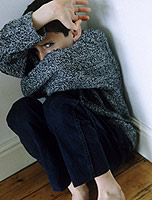 Functional hallucinations. Functional hallucinations - Those that arise
Functional hallucinations. Functional hallucinations - Those that arise
Against the background of a real stimulus acting on the senses, and only in
The flow of its action. The classic example described in. BUT. Gilyarovsky:
The patient as soon as water begins to pour water, heard the words: «Idi
Home, Nadya». When tightening the crane disappeared and auditory hallucinations.
Also, visual, tactile and other hallucinations may occur. From
True hallucinations functional are distinguished by the presence of real
stimulus, although they have a completely different content, and from illusions -,
which are perceived in parallel with the real stimulus (it is not
transformed into some «vote», «Vision» and T.D.).
Cosnounced and caused hallucinations. Cosnounced and caused hallucinations. Hallucinatory
Cheating feelings can be impressed during a hypnosis session when a person will
Feel, for example, the smell of roses, drop off «spoken» his
rope. With a well-known readiness for hallucination, the appearance
hallucinations and then when spontaneously these deceptions of feelings no longer appear
(for example, if a person has just suffered a delirium, especially alcoholic).
Symptom of lipman - calling visual hallucinations with easy clicking on
Eyeballs of the patient, sometimes adding to pressing
Appreciation. Symptom of pure sheet (rayhardt symptom)
lies in the fact that the patient is visited very carefully
consider the blank sheet of white paper and tell what he sees there.
With the symptom of Ashaffenburg, the patient is suggested to talk on the shown off
telephone; Thus, readiness is checked for the occurrence of auditory
hallucinations. When checking the last two symptoms you can also resort
To the suggestion, saying, let's say: «See what opinions are you talking about it
Figure?», «How do you like this dog?», «What tells you by phone
This female voice?»
Occasionally inspired hallucinations (usually,
Spectatives) may have induced nature: healthy, but inspired,
With hysterical traits of character, a person may fall after the sick «see»
Damn, angels, some flying items and t. D. Even less induced
hallucinations may arise from several people, but usually on very
a short time and without that clarity, imagery, brightness, as it happens
Patients.
Hallucinations - symptom of painful disorder
(although sometimes short-term, for example, under action
psychotomimetic means). But sometimes, as already noted, pretty
rarely, they can occur both in healthy (inspired in hypnosis,
induced) or under the pathology of the organs of vision (cataract, detachment
retina and T.D.) and hearing.
Hallucinations More often elementary (light flashes,
zigzags, multicolored spots, foliage noise, falling water and t.D.), but can
be in the form of bright, shaped auditory or visual deceptions of perception.
abundant hallucinations (verbal, visual, tactile) on the background of a clear
consciousness, duration of 1-2 weeks (acute hallicosis) to several
(chronic hallicosis). Hallucinia may be accompanied by affective
disorders (anxiety, fear), as well as crazy ideas. Hallucinosis
observed with alcoholism, schizophrenia, epilepsy, organic
lesions of the brain, including syphilitic etiology.


